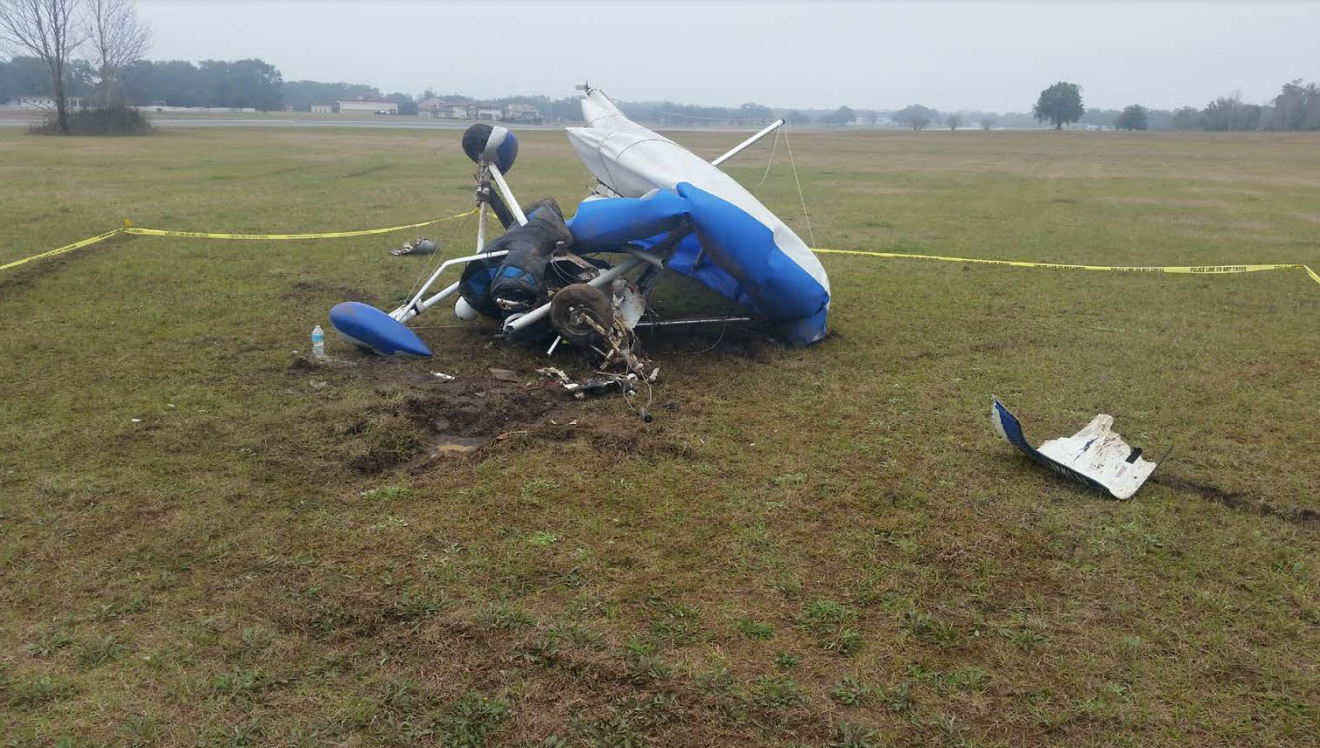
ASN Wikibase Occurrence # 221487
This information is added by users of ASN. Neither ASN nor the Flight Safety Foundation are responsible for the completeness or correctness of this information.
If you feel this information is incomplete or incorrect, you can submit corrected information.
| Date: | Saturday 2 February 2019 |
| Time: | 16:25 |
| Type: | Airborne Windsports Edge X |
| Owner/operator: | Private |
| Registration: | N123NY |
| MSN: | 582-914 |
| Year of manufacture: | 2004 |
| Total airframe hrs: | 164 hours |
| Engine model: | Rotax 582 |
| Fatalities: | Fatalities: 1 / Occupants: 1 |
| Aircraft damage: | Substantial |
| Category: | Accident |
| Location: | Jumbolair Airport (17FL), Ocala, FL -
 United States of America United States of America
|
| Phase: | Initial climb |
| Nature: | Private |
| Departure airport: | Jumbolair Airport, FL (17FL) |
| Jumbolair Airport, FL (17FL) | |
| Investigating agency: | NTSB |
| Confidence Rating: |
On February 2, 2019, about 1625 eastern standard time, N123NY, an Airborne Windsports Edge X 2, collided with terrain during the initial climb after takeoff from Jumbolair Airport (17FL), Ocala, Florida. The two-place, weight shift-control experimental light-sport aircraft was substantially damaged. The non-certificated pilot was fatally injured. Day, visual meteorological conditions prevailed at the time, and no flight plan was filed for the local, personal flight. The flight was operated under the provisions of 14 Code of Federal Regulations (CFR) Part 91.
The noncertificated pilot, who had been receiving flight instruction from another noncertificated pilot, was performing his first solo flight in the weight-shift control experimental light-sport aircraft. After departure, the aircraft climbed to about 100 ft above ground level, veered side to side, dropped nose down, and impacted terrain. A witness to the accident flight stated the engine ran smoothly throughout the flight. Thus, it is likely that the aircraft exceeded its critical angle of attack during initial climb, which resulted in an aerodynamic stall at an altitude too low to recover.
Toxicology testing found that diphenhydramine and topiramate, both of which are potentially impairing drugs, were present in the pilot's specimens at levels that were too low to be quantified; thus, it is unlikely that the pilot's use of these medications contributed to the accident.
Probable Cause: The noncertificated pilot's exceedance of the aircraft's critical angle of attack, which resulted in an aerodynamic stall.
Accident investigation:
 |
|
Sources:
NTSB
FAA register: https://registry.faa.gov/aircraftinquiry/NNum_Results.aspx?NNumbertxt=123NY
Location
Images:

Photo: NTSB
Media:
Pilot dies after Ultralight glider crashes near Jumbolair runway near Ocala https://t.co/oVIdQTxJgP
— CBS4 Gainesville (@mycbs4) 3 février 2019
Revision history:
| Date/time | Contributor | Updates |
|---|---|---|
| 03-Feb-2019 03:07 | Geno | Added |
| 03-Feb-2019 13:23 | Iceman 29 | Updated [Embed code] |
| 05-Feb-2019 00:00 | RobertMB | Updated [Time, Aircraft type, Registration, Cn, Operator, Source, Embed code, Narrative] |
| 08-Jun-2020 08:38 | ASN Update Bot | Updated [Time, Nature, Departure airport, Destination airport, Source, Embed code, Narrative, Plane category, Accident report, ] |
| 07-May-2023 21:16 | Captain Adam | Updated [[Time, Nature, Departure airport, Destination airport, Source, Embed code, Narrative, Plane category, Accident report, ]] |
Corrections or additions? ... Edit this accident description
The Aviation Safety Network is an exclusive service provided by:


 ©2024 Flight Safety Foundation
©2024 Flight Safety Foundation